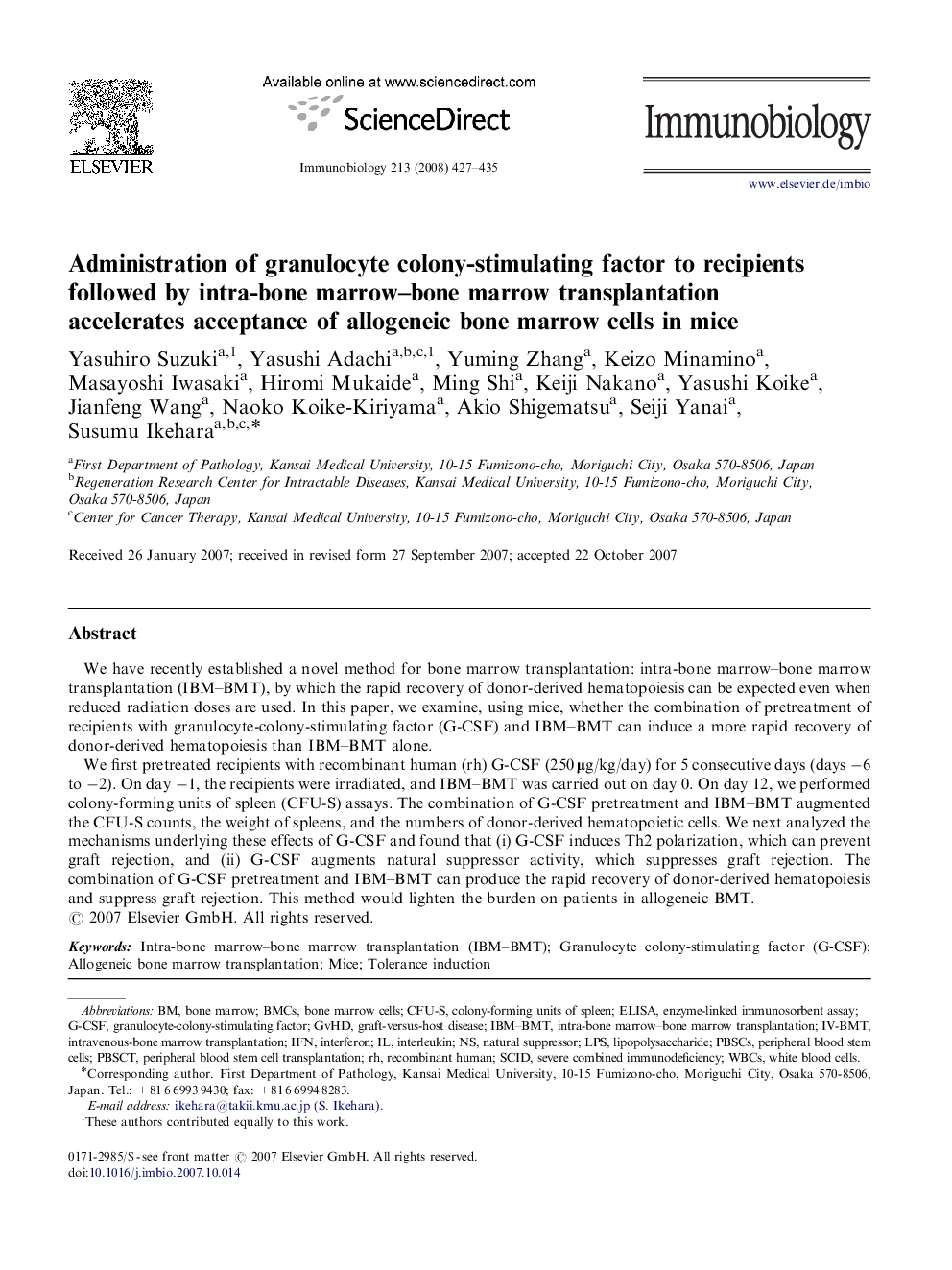| Article ID | Journal | Published Year | Pages | File Type |
|---|---|---|---|---|
| 2183780 | Immunobiology | 2008 | 9 Pages |
We have recently established a novel method for bone marrow transplantation: intra-bone marrow–bone marrow transplantation (IBM–BMT), by which the rapid recovery of donor-derived hematopoiesis can be expected even when reduced radiation doses are used. In this paper, we examine, using mice, whether the combination of pretreatment of recipients with granulocyte-colony-stimulating factor (G-CSF) and IBM–BMT can induce a more rapid recovery of donor-derived hematopoiesis than IBM–BMT alone.We first pretreated recipients with recombinant human (rh) G-CSF (250 μg/kg/day) for 5 consecutive days (days −6 to −2). On day −1, the recipients were irradiated, and IBM–BMT was carried out on day 0. On day 12, we performed colony-forming units of spleen (CFU-S) assays. The combination of G-CSF pretreatment and IBM–BMT augmented the CFU-S counts, the weight of spleens, and the numbers of donor-derived hematopoietic cells. We next analyzed the mechanisms underlying these effects of G-CSF and found that (i) G-CSF induces Th2 polarization, which can prevent graft rejection, and (ii) G-CSF augments natural suppressor activity, which suppresses graft rejection. The combination of G-CSF pretreatment and IBM–BMT can produce the rapid recovery of donor-derived hematopoiesis and suppress graft rejection. This method would lighten the burden on patients in allogeneic BMT.
